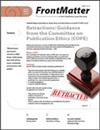白蛉的建网行为及其与其他蠓科蛛网的比较
IF 0.9
3区 农林科学
Q3 ENTOMOLOGY
引用次数: 0
摘要
摘要恐爪目蜘蛛使用高度专业化的网来捕获猎物,这些网由三角形的无粘性脚手架(NS脚手架)组成,其中包含三个半径和一个改进的矩形圆形蛛网。蜘蛛主动操纵它们的网来捕捉猎物。本文利用文献资料和网络上的图片,描述了白蛉的织网行为,并将其与其他白蛉的粘丝螺旋(SS螺旋)的形状进行了比较。d.c.f. acea的造网行为遵循先前描述的其他Deinopis MacLeay(1839)物种的模式。网站建设大约需要15分钟,在d.c.b.圆柱,有两个阶段:NS脚手架建设和SS螺旋建设。SS螺旋的最终结构有四个紧密间隔的捕获线,五个放置得更远,三个靠近网的顶部,两个在手柄上,总共12个。其他种类的恐爪龙有不同数量的索。最后,一个新颖的发现是,最年轻的蜘蛛不会用粘稠的线织网,而是用简单的网向前冲,只用腿接触猎物。据我们所知,这种行为从未在这个或任何其他群体中被描述过。本文章由计算机程序翻译,如有差异,请以英文原文为准。
Web construction behavior of Deinopis cf. cylindracea (Deinopidae: Araneae) and its comparison to webs of other Deinopidae
Abstract. Deinopid spiders use highly specialized webs composed of a triangular non-sticky scaffolding (NS scaffolding) containing three radii and a modified orbicular web with a rectangular shape to capture prey. Spiders actively manipulate their webs to capture prey. We describe the web construction behavior of Deinopis cf. cylindracea and compare it and the shape of the sticky silk spiral (SS spiral) of other deinopid species using images in the literature and on the Internet. The web-building behavior in D. cf. cylindracea follows the pattern previously described for other species of Deinopis MacLeay, 1839. Web construction takes approximately 15 min in D. cf. cylindracea and has two stages: NS scaffolding construction and SS spiral construction. The final structure of the SS spiral has four closely spaced capture cords, five placed further apart, three near the top of the web, and two cords on the handles, making a total of 12. Other species of Deinopis have different numbers of cords. Finally, a novel finding is that the youngest spiders do not make webs with sticky lines, but instead use a simplified web to lunge forward, using only their legs to contact prey. To our knowledge, such behavior has never been described in this or any other group.
求助全文
通过发布文献求助,成功后即可免费获取论文全文。
去求助
来源期刊

Journal of Arachnology
生物-昆虫学
CiteScore
2.20
自引率
10.00%
发文量
34
审稿时长
>12 weeks
期刊介绍:
The Journal of Arachnology publishes scientific articles reporting novel and significant observations and data regarding any aspect of the biology of arachnid groups. Articles must be scientifically rigorous and report substantially new information.
 求助内容:
求助内容: 应助结果提醒方式:
应助结果提醒方式:


